Exploring the legacy of Fatal Fury: The legendary fighting game series that's returning after 23 years
Looking back on the history of Fatal Fury, SNK's fighting series that's set to return more than 20 years later
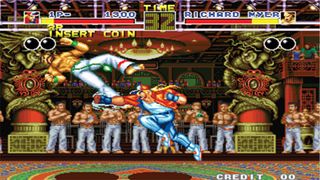
There aren't many games upon which legacies are founded, but Fatal Fury is undoubtedly one of them. When you think of SNK and its Neo-Geo hardware, it's almost impossible to avoid thinking about fighting games - and that's been true for decades. Without Fatal Fury, the company's debut entry in the genre, it's entirely possible that SNK simply wouldn't be the company that we know today. The story of Fatal Fury begins with the arcade fighting pioneer Takashi Nishiyama, who had joined SNK after creating Kung Fu Master at Irem and Street Fighter at Capcom. At SNK, Nishiyama designed a spiritual successor to Street Fighter, a one-on-one fighting game titled Fatal Fury (and in Japan, Garou Densetsu - literally 'Legend Of The Hungry Wolf').
The game focused on the brothers Terry and Andy Bogard, as well as their friend Joe Higashi, as they fought to avenge the murder of their father at the hands of the crime lord Geese Howard. In order to do that, they had to fight through an array of unusual combatants in South Town's King Of Fighters tournament. In terms of gameplay, Fatal Fury innovated the use of a two line battle system. Fighters could jump back and forth between two different planes, making good use of the Neo-Geo's sprite scaling capabilities to convey the shift.
"At that time, 3D games were not the mainstream," notes Yasuyuki Oda, a veteran Fatal Fury developer who was at the time of this interview (back in 2016) working on The King Of Fighters XIV at SNK. "Adding another fighting background and solid expressions were factors that had made the Fatal Fury series such a success."
The Fighters
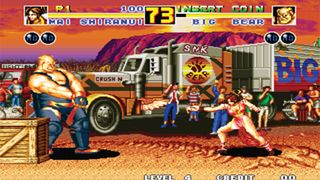
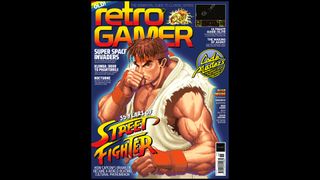
This feature first appeared in Retro Gamer magazine. For more features exploring classic games and consoles delivered right to your door or device, subscribe to Retro Gamer today in print or digital.
In most other regards, it was more similar to the original Street Fighter than Capcom's own Street Fighter II, which had arrived earlier in 1991. Where Street Fighter II was geared towards competitive two-player action and had a fighting system geared towards combos, Fatal Fury relied on accurately timed special moves and focused on competition against the computer rather than other players. Inserting a credit during gameplay wouldn't cause a new one-on-one fight, instead pitting both players against the enemy before they settled their own differences. What's more, of the game's 11 characters, only three could be controlled by players and the rest were reserved for the computer.
Compared to the combatants of other games, the Fatal Fury cast stood out. Terry Bogard's street clothes stood in stark contrast to the martial arts attire of so many other fighting game characters, to say nothing of more outlandish designs like Duck King. "We believe that the characters that did not look like actual fighters had an impact," says Oda. Likewise, many boasted unique gameplay traits - Richard Meyer could hang from the ceiling of the Pao Pao Café, Tung Fu Rue could transform from a diminutive man into a hulking, muscular beast and Billy Kane used a weapon.
One of the most memorable was the game's final boss, Geese Howard, who is as iconic of the series as its heroes. Unlike other characters, Geese was able to anticipate your attacks and deliver devastating responses. "I believe the 'atemi-nage' (counter grab) system influenced the fighting game genre later," says Oda - and indeed, many 2D and 3D fighting games have incorporated such attacks. However, it wasn't just his unique fighting style that made him popular - his design was memorable too, as he sported the unusual clothing choice of an aikidogi.
"In his first appearance in Fatal Fury, he was the stereotype of a 'Godfather'-type character with some influences from the Japanese culture," Oda notes. "Then, players were able to select him in Fatal Fury Special, and he gained a stable popularity. Geese and Billy have always been created by designers specialised for these two characters. We believe that their passion has influenced these characters' charisma."
Sign up to the GamesRadar+ Newsletter
Weekly digests, tales from the communities you love, and more
Fatal Fury arrived towards the end of 1991 and was met with a positive reception. "SNK have done themselves absolutely no harm in releasing this brilliant feast of fighting," opined Paul Rand in C&VG's review of the Neo-Geo version, urging readers to "get your parents to remortgage the house and go get it." Home conversions followed in 1992 and 1993 for the Mega Drive, SNES and Sharp X68000, all of which were well regarded.
Fatal Fury Special

Having done well, Fatal Fury earned a sequel which arrived at the tail end of 1992. Fatal Fury 2 saw the King Of Fighters tournament expanding across the world thanks to Wolfgang Krauser, the new antagonist and Geese Howard's half-brother. Many of the first game's veterans were injured at Krauser’s hands, so few characters returned. The Bogard brothers and Joe Higashi naturally did, and they were joined by Big Bear (the unmasked, and rather friendlier, Raiden), now a playable fighter. Four more playable characters joined the roster too - the portly Cheng Sinzan, elderly Jubei Yamada, taekwondo expert Kim Kaphwan and the series' first female fighter, Mai Shiranui. Krauser wasn't the only new boss either, with Laurence Blood and Axel Hawk joining Billy Kane as lackeys of the bad guy.
In gameplay terms, Fatal Fury 2 revamped the two-line fighting system by allowing players to switch planes at will using the A and B buttons, adding an extra element of strategy to fights. Fighters also had a new class of move at their disposal, the 'Desperation Move' - a powerful attack which could only be activated when the player was low on life.
"In Japanese anime and manga culture, having Desperation Moves above Special Moves was a natural flow," explains Oda, and it makes sense - we've definitely seen anime characters unleash their biggest attacks when on the brink of defeat. "Once we made sure to have enough memory and time to implement them, we included Desperation Moves in Fatal Fury 2." However, these weren't a Fatal Fury innovation, as Oda is quick to remind us. "Fatal Fury 2 was not the first game in the fighting game genre to feature Desperation Moves, it was Art Of Fighting."
Fatal Fury 2 was strongly received, and made its way to a greater variety of home formats than the previous game, with PC Engine CD and Game Boy versions alongside the Mega Drive, SNES and Sharp X68000 versions. However, by the time most of those versions had been released, the next game was already in arcades - and while it was an update of Fatal Fury 2, it was a watershed moment for the series. "Fatal Fury Special was the first SNK fighting game to take account of versus battles," explains Oda.
"The fighting game genre was about to become mainstream in the Japanese arcade game market at that time and Fatal Fury rode that wave as well. In addition to this, the game had a huge roster for the time as well as stages and sound effects/music of high quality. Those factors definitely gave players a strong impression."
Adding to the roster
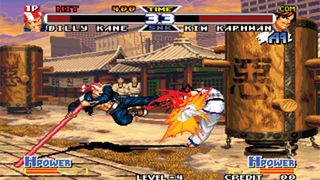
The main feature of the update was a playable character roster that had almost doubled compared to Fatal Fury 2, as the four boss characters became playable and Tung Fu Rue, Duck King and Geese Howard returned to the roster. New backgrounds were added for the new fighters too, adding the likes of Tung Fu Rue's mountain stage to iconic Fatal Fury 2 stages set on trains and rafts. Greater support for combos was also added, bringing the fighting system closer to other games of the time. However, the most attention-grabbing addition was a character from a completely different game entirely.
"Bringing Ryo Sakazaki to the Fatal Fury Series from Art Of Fighting was also a great idea," Oda says. Included as a hidden final boss for players who managed to beat the game without losing a round, Ryo's appearance paved the way for the later King Of Fighters series by pioneering the fighting game crossover. However, keeping the inclusion under wraps proved problematic for SNK. "Although we were planning to keep Ryo Sakazaki's appearance secret until the game release, Ryo was announced on a huge screen at Tokyo Game Show," recalls Oda. "That moment was too awkward for me…"
Testing the game wasn’t all smooth sailing, either. "We failed once in the difficulties' settings, and we needed to carry out some playtests again," says Oda, but when it finally received its full release in September 1993, Fatal Fury Special reaffirmed the series' place in the upper tier of fighting games. The game later made its way to the SNES, PC Engine CD, Mega-CD, Game Gear, Sharp X6800 and FM Towns, and really marked the peak of Fatal Fury's mainstream popularity - as well as the numerous home conversions, Fatal Fury even received an animated movie in 1994.
The next game in the series wasn't quite as well received, as Oda explains. "Fatal Fury 3's development was stopped due to the Great Hanshin earthquake, and then we had no other choice but to release a game of a lower quality than expected." Fatal Fury 3: Road To The Final Victory returned the game's setting to South Town, with fighters now out in search of the mysterious Jin scrolls, mysterious artefacts that are said to be obtainable only by the strongest warriors. Terry, Andy and Joe were in the hunt again, but most of the rest of the cast took a break for this quest - only Mai and Geese returned, with another brand-new set of fighters accompanying them. These included five new playable characters, the most popular of whom is Blue Mary, as well as the psychotic subboss Ryuji Yamazaki and the brothers Jin Chonshu and Jin Chonrei, who served as the game's final bosses.
SNK revamped the game system again for Fatal Fury 3. The big innovation this time was the addition of a third plane for fighting. "The line-sway system is Fatal Fury Special was rather for running away than for escaping. That was why we intended to create a system to escape like a real match in martial arts. As a result, quick-sway and over-sway lines were established as a brand-new system," explains Oda. "However, those systems were too complicated and not impressive enough. They worked better in the Real Bout series," he adds. Indeed, the new system imposed strict limits - players couldn’t perform jumps or special attacks outside of the central lane.
The game also included new 'Hidden Desperation Moves', ultra-powerful attacks which could knock off 50 to 90 percent of an opponent's health bar. However, they were practically impossible to utilise - not only did they require the player to unlock the move with a code at the beginning of the fight, but then an initialising action had to be performed before the move could be used.
Ring-out victories

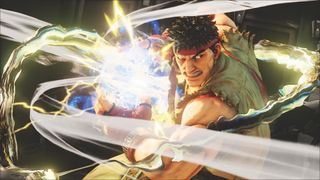
The 25 best fighting games to lock horns with right now.
Fatal Fury 3 arrived in arcades in March 1995, but failed to live up to commercial expectations. "While Fatal Fury 3 received positive impressions for its rendering, the game itself was a failure in terms of business due to its complicated line system, smaller number of characters, Terry's loop combos and useless hidden abilities," Oda confides. Fatal Fury 3 certainly isn't a bad game to play, but we can see how it is overcomplicated - a problem the fighting genre would have to tackle a lot in the years to come. In the home market, the usual Neo-Geo version was joined by conversions for the Neo-Geo CD, Sega Saturn and PC - a much smaller selection of systems than had hosted Fatal Fury Special.
Less than a year later, SNK would right the wrongs of Fatal Fury 3 with Real Bout Fatal Fury. The game's plot goes back to basics: having stolen the Jin scrolls, Geese Howard is in control of South Town once more and holds a new fighting tournament to settle the score with Terry Bogard once and for all. The Fatal Fury 3 cast returned in full for this climactic rumble, with Kim Kaphwan, Duck King and Billy Kane also returning to the fray. The game's control scheme was simplified, with a dedicated line change button added to make utilising the game’s three fighting planes easier, and the use of Desperation Moves and Hidden Abilities was now governed by a super meter at the bottom of the screen, as seen in other fighting games.
The big new addition was ring-out victories, which could be achieved by pushing your opponent over the boundary of the stage. This was a feature that was far more common to 3D fighting games, having been popularised by Virtua Fighter, and SNK made sure it wasn't easy to achieve in Real Bout Fatal Fury. You usually needed to break a protective barrier to make it happen, but it was often humorous when you managed to pull it off - you could push your opponent into the sea, or knock them into a subway carriage and have them driven away.
With the short development schedule of the game, it was inevitable that there would be an oversight, but we didn't expect Oda to tell us about one particular unintended feature. "When we released Real Bout Fatal Fury, we forgot to remove the debug mode," he confesses. "There are still somewhere games in which Desperation Moves can be activated continuously just by doing down, down+C."
Real Bout Fatal Fury was positively received by the fans and press, with Electronic Gaming Monthly’s four reviewers awarding the game an excellent 8.75 out of 10. However, by this point the series' position in the fighting hierarchy had changed. "We feel that the game controls and system changes in Real Bout Fatal Fury were a huge success," Oda says. "However, those systems were unique and the game was dropped from the fighting games' mainstream. The King Of Fighters series which inherited the game controls from Fatal Fury 2 became the mainstream instead." As well as being released for SNK’s home consoles, the game made its way to PlayStation and Saturn.
Closer to its roots

At the beginning of 1997, Real Bout Fatal Fury Special became the second 'Dream Match' instalment of the series, which excluded plot and focused just on fighting. According to Oda, this was done “because Real Bout Special is exactly ‘special’, this game has no traditional story as well as Fatal Fury Special did not". The game brought the series closer to its roots by returning to the two-line battles, and marked the return of Tung Fu Rue, Cheng Sinzan, Laurence Blood and Wolfgang Krauser. Likewise, ring-out victories disappeared.
"The ring-out system in Real Bout Fatal Fury received positive impressions from our fans. However, we added later a new system in Real Bout Fatal Fury Special," Oda notes. "As Real Bout Fatal Fury Special's focus was versus battles, we decided to remove the system that would lead to accidental falls and not be liked by fans." While Real Bout Fatal Fury Special was another good game, Fatal Fury was further from the mainstream than ever. For the first time ever, home conversions weren't released outside of Japan. Unusually, the PlayStation conversion featured major additions in the form of a new story, featuring Alfred Airhawk and his mind-bending criminal nemesis White. However, it also featured omissions, including the removal of two-line battles.
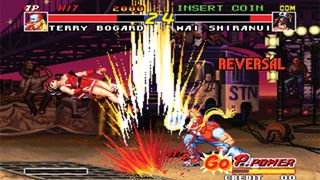
In 1998, Real Bout Fatal Fury 2: The Newcomers arrived and added the series' first new characters in three years - Li Xiangfei, a boisterous runaway who loves to eat, and Rick Strowd, a bruiser with Native American heritage. Once again the game featured no storyline. "For Real Bout Fatal Fury 2, the development schedule was simply too short," Oda explains. "Real Bout Fatal Fury 2 was developed with the shortest period in all SNK fighting games.” From the outside, it was hard to tell how little time the developers had - the game featured beautiful 2D visuals, and once again retooled the two-line battles by dedicating one plane strictly to escapes.
By this point, though, the series was far from the limelight - Real Bout Fatal Fury 2 was only converted to SNK's own consoles, with the most interesting version being Fatal Fury: First Contact. Functionally, it was a cut-down conversion of the game for the then-new Neo-Geo Pocket Color, with a selection of the game's characters and backgrounds reworked for the smaller screen.
As it turned out, there wouldn’t be another traditional 2D Fatal Fury title, as SNK attempted to refresh the series in two different directions at the same time. "The development of Fatal Fury: Wild Ambition and Garou: Mark Of The Wolves was at the same time. Fatal Fury: Wild Ambition was just released a bit earlier," notes Oda. Fatal Fury: Wild Ambition was a 3D fighting game for the Hyper Neo-Geo 64 arcade system, featuring a selection of classic characters alongside two newcomers, a female wrestler named Tsugumi Sendo and the cantankerous elderly gentleman Toji Sakata.
Looking ahead
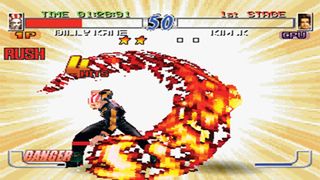
Unfortunately, Fatal Fury: Wild Ambition wasn't well received when it arrived in 1999. The ability to escape into the foreground and background was a relatively standard feature in 3D fighting games, and the game’s visuals didn't hold up well against contemporaries such as Tekken 3. The PlayStation conversion was graphically downgraded, but featured two additional unlockable characters. It was still received poorly by the press. Gamespot awarded the game 6.1/10, commenting that "You really need to be a fan of the Fatal Fury series to appreciate this game since the casual passerby would be so much better off with Tekken 3." IGN's 4/10 review was damning, stating that "It’s just disappointing to see a 2D to 3D conversion turn out to be so horrible, especially when it comes from an awesome lineage."
While the move into 3D failed, refreshing the series in 2D was a massive success. "Our fans were bored with the numerous sequels of the Real Bout series, and we made the decision to refresh the series with Garou: Mark Of The Wolves," Oda tells us. With the exception of Terry Bogard, the entire cast was replaced with new characters - though many were related to the old cast, such as Geese's son Rock Howard and Andy's protégé Hokutomaru. Even Terry received a major redesign.
"Terry's design was brand new at the time Fatal Fury was released. However, his design was becoming quite classical at the time of developing Garou: Mark Of The Wolves," Oda remembers. "We also wanted to show an older and peaceful Terry by changing his outfit.”
Garou: Mark Of The Wolves didn’t just refresh the cast - as a new technique known as the Just Defend was introduced. By timing your block to coincide with the enemy’s attack, you gained a variety of advantages over regular blocking, including quicker recovery, the ability to guard in the air and even a bit of life recovery. Additionally, the Tactical Offense Position (TOP) allowed players to select a certain region of their life bar, within which players gained gradual life recovery, enhanced damage and quicker super meter charging.
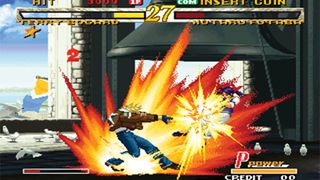
Garou: Mark Of The Wolves has become recognised as a 2D fighting classic, thanks to its excellent gameplay and outstanding visuals, which offer some of the most impressive animation on the Neo-Geo. “In Garou: Mark Of The Wolves, changing animation frames even by one frame could have led to slowdowns, but we were able to balance the game to its limits," Oda remarks. The game was specifically designed to show this off, too. "We made the character size smaller in order to make the screen look wider, we increased the speed of the characters movement, shortened damage and guard recovery times. Those factors allowed characters to move a lot during battles."
However, the game's reputation spread slowly, in part due to the fact that home versions were hard to come by following the game's 1999 release unless you were willing to fork out for a Neo-Geo cartridge. A Dreamcast version managed to ship just before SNK's bankruptcy, and the PS2 conversion didn't appear until 2005. Even then, the game wasn't made available in Europe until the game came to XBLA in 2009. Having heard that a sequel to Garou: Mark Of The Wolves had been planned before SNK's 2001 bankruptcy, we had to ask Oda if it was indeed started, and what remained of the project if it had been. "Yes, that is true," he confirms - but as we get our hopes up, he lets us in on the unfortunate truth. "The data is almost gone. However, some of them are still in our office as PDF files," he explains, meaning that little other than concept documents survived.
Since then, the Fatal Fury series has been dormant, but its history means that it continues to hold a following - as well as the continued use of Fatal Fury characters in the King Of Fighters series, Fatal Fury appears in spinoff products and the games are available on download services. Given the interest in the series, we had to ask Oda if there was any chance that it might return one day. "Yes," he answers. "If The King Of Fighters XIV succeeds, not only the Fatal Fury series but also all our IPs may revive one day." At the time of the interview, which marked the 25th anniversary of Fatal Fury, the future of the series remained uncertain. All that's changed though, thanks to announcement from SNK, which revealed that after over 20 years, Fatal Fury is officially coming back at long last.
This feature first appeared in Retro Gamer magazine issue 155. For more great articles like this one, check out subscription offers over at Magazines Direct.
Nick picked up gaming after being introduced to Donkey Kong and Centipede on his dad's Atari 2600, and never looked back. He joined the Retro Gamer team in 2013 and is currently the magazine's Features Editor, writing long reads about the creation of classic games and the technology that powered them. He's a tinkerer who enjoys repairing and upgrading old hardware, including his prized Neo Geo MVS, and has a taste for oddities including FMV games and bizarre PS2 budget games. A walking database of Sonic the Hedgehog trivia. He has also written for Edge, games™, Linux User & Developer, Metal Hammer and a variety of other publications.
Most Popular



